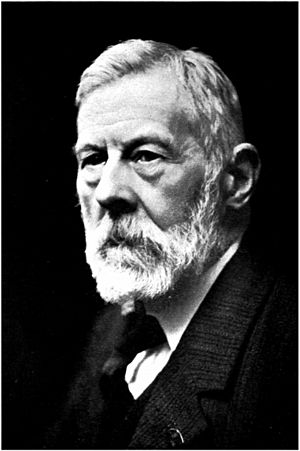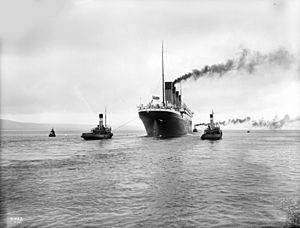Robert Welch (photographer) facts for kids
Quick facts for kids
Robert Welch
|
|
|---|---|
 |
|
| Born | 22 July 1859 |
| Died | 28 September 1936 (aged 77) |
| Nationality | Irish |
| Known for | Photography |
Robert John Welch (born July 22, 1859 – died September 28, 1936) was a famous Irish photographer. He loved taking pictures of nature, especially tiny sea creatures called molluscs. Robert was born in Strabane, County Tyrone, Ireland. His dad was also a great photographer.
After his father passed away, Robert started his own photography business in Belfast in 1883. He spent a lot of time taking photos of people's lives and the beautiful Irish countryside.
Contents
Robert Welch's Photography Career
Robert Welch was an expert in outdoor photography. He took thousands of pictures of towns and amazing scenery across Ireland. His photos from the late 1800s and early 1900s are very important. They show us what Ireland and Irish life were like back then.
Welch also photographed many ancient sites. These included national monuments, huge stone structures called megaliths, and dolmens. Some famous places he photographed were Carrowmore, Loughcrew, the Hill of Tara, and Newgrange. He was known for making his photos look great. Sometimes, he even asked local people to stand in his pictures.
Photographing Famous Ships
The famous shipyard Harland and Wolff hired Welch. He took pictures of them building two huge ships: the RMS Olympic and the RMS Titanic. Another well-known Belfast photographer, William Alfred Green, learned from Welch. Green later photographed many of the same things as his teacher.
Awards and Recognition
Throughout his life, Robert Welch received many awards for his work. In 1904, he became a member of the Royal Irish Academy. This was because of his important contributions to photography.
He also took many photos of life in the West and Northwest of Ireland. These pictures were for a group called the Congested Districts Board. Because of this work, Queen Victoria gave him a special royal warrant when she visited Ireland in 1900. This was a huge honor!
In 1923, Queen's University Belfast gave Welch an honorary Master of Science degree. This showed how much they valued his work.
Robert Welch's Legacy
Welch's life was full of contributions to many fields. He helped us understand photography, nature, rocks, old ruins, and people's cultures. He was also a member and even president of important groups. These included the Belfast Naturalist Field Club and the Conchological Society of Great Britain and Ireland.
When Welch died in 1936, many people remembered him. Other famous naturalists and photographers wrote about his amazing life. By the time he passed away, Welch had taken thousands of photographs.
After his death, friends and family gathered about 5,000 of his glass plate negatives. These were like old-fashioned film. They also collected his notes and maps. All these items were given to the Belfast Museum and Art Gallery, now called the Ulster Museum. You can see some of his enlarged photos there today. The glass negatives of the ships he photographed for Harland & Wolff are at the Ulster Folk and Transport Museum.
In 2010, a special blue plaque was put on his childhood home in Strabane. This plaque honors Robert Welch. He was also featured in a BBC TV show called Ulster In Focus.
Books Featuring Robert Welch's Work
Many books show Robert Welch's amazing photographs and his contributions. Here are a few examples:
- ‘Framing the west: images of rural Ireland 1891-1920’
- ‘Ireland's eye: the photographs of Robert John Welch’
- ‘A history of the land and freshwater Mollusca of Ulster’
- ‘Sister Ships Olympic and Titanic, March 6, 1912’
- ‘Album of Belfast views.’
Gallery
-
The A-Deck level of the first class aft Grand Staircase of Titanic''s sister ship, the Olympic, by Welch







